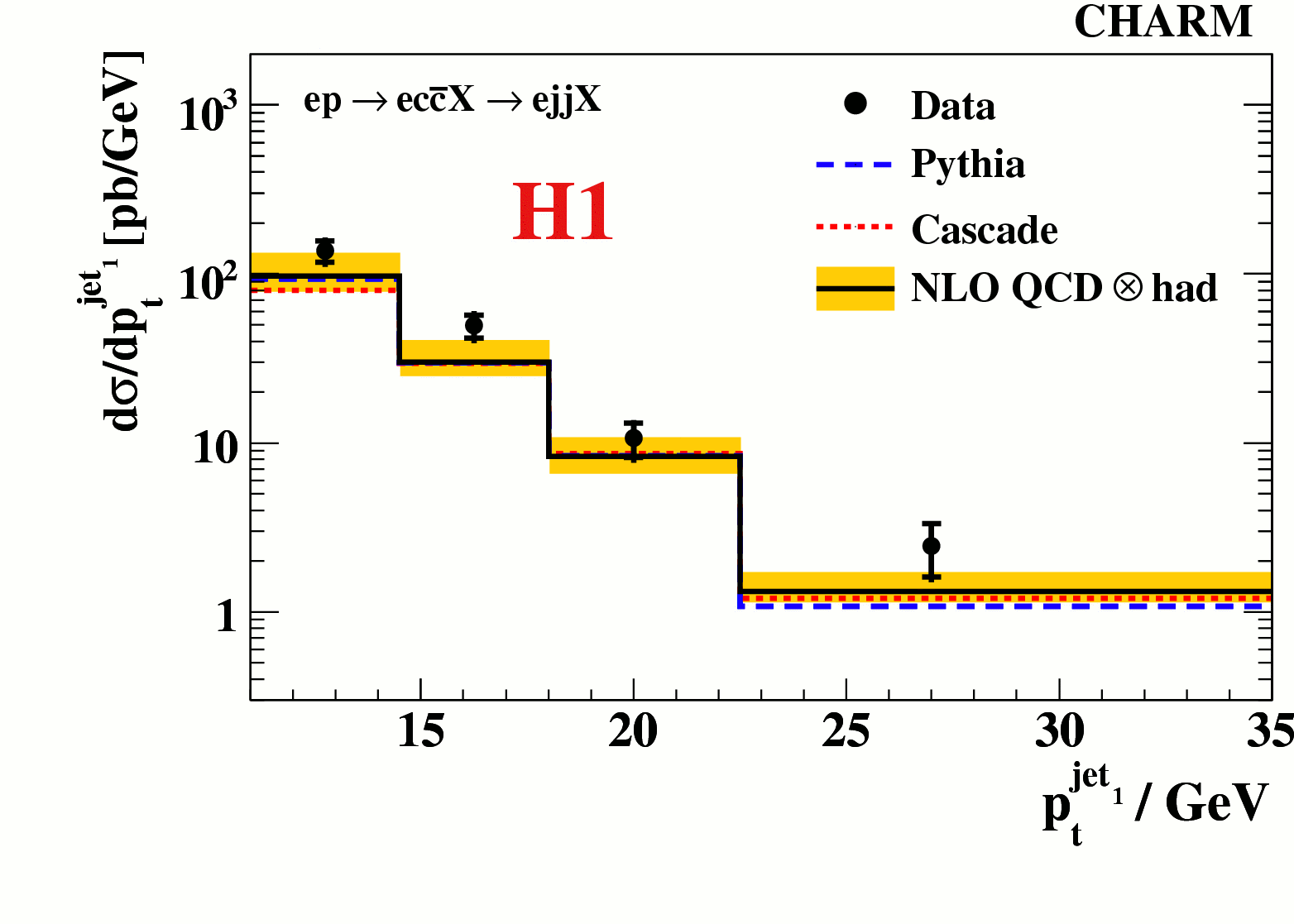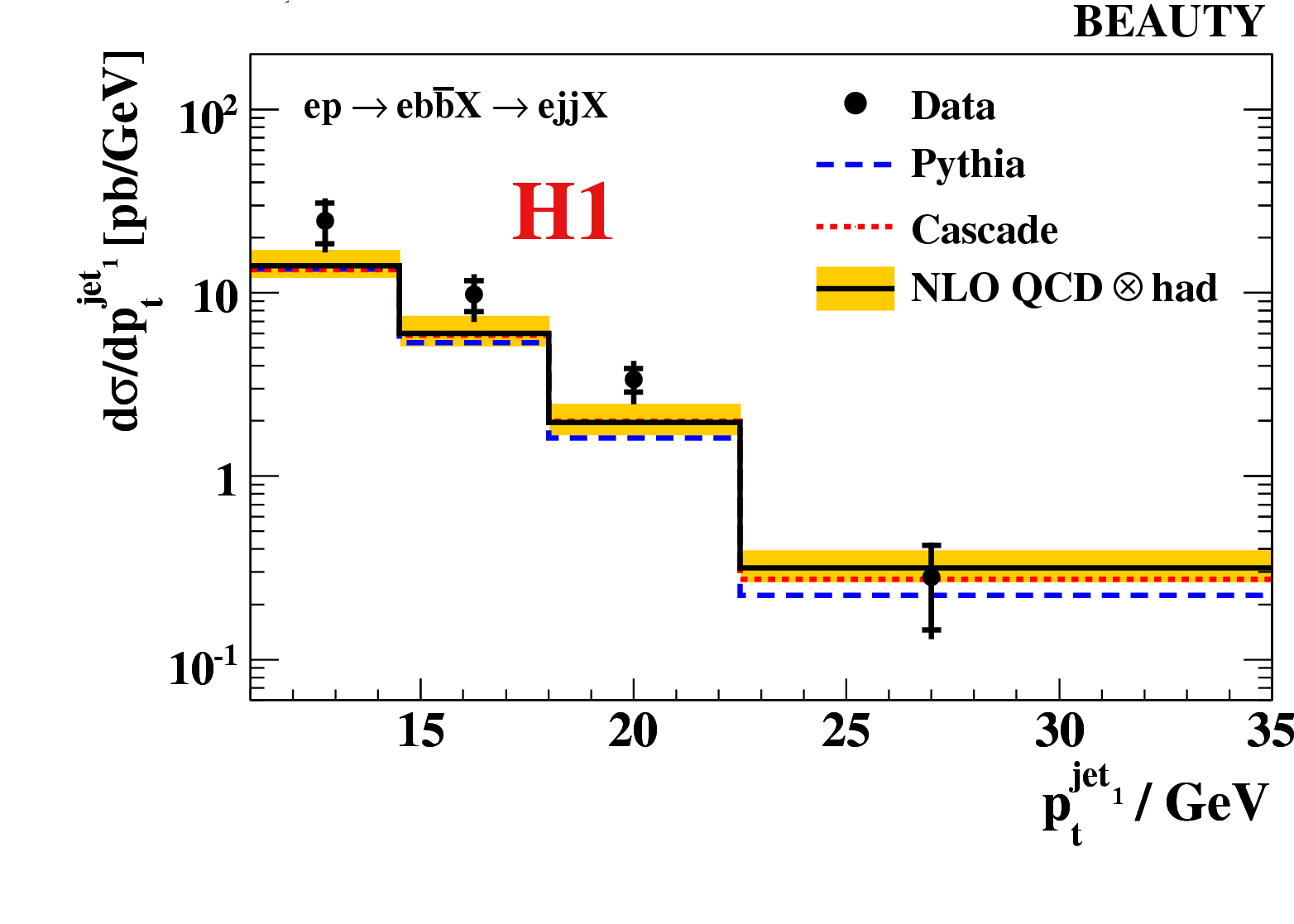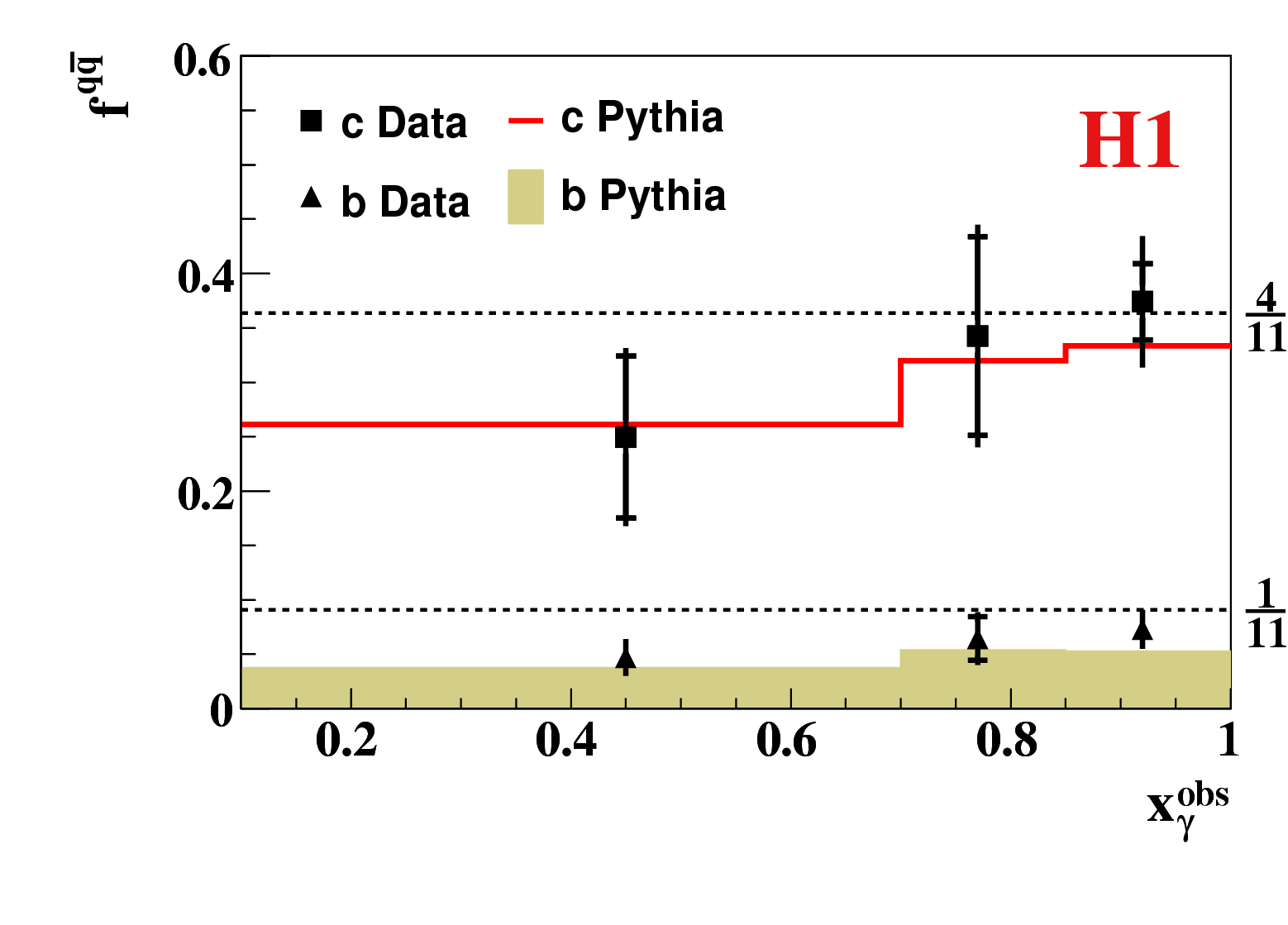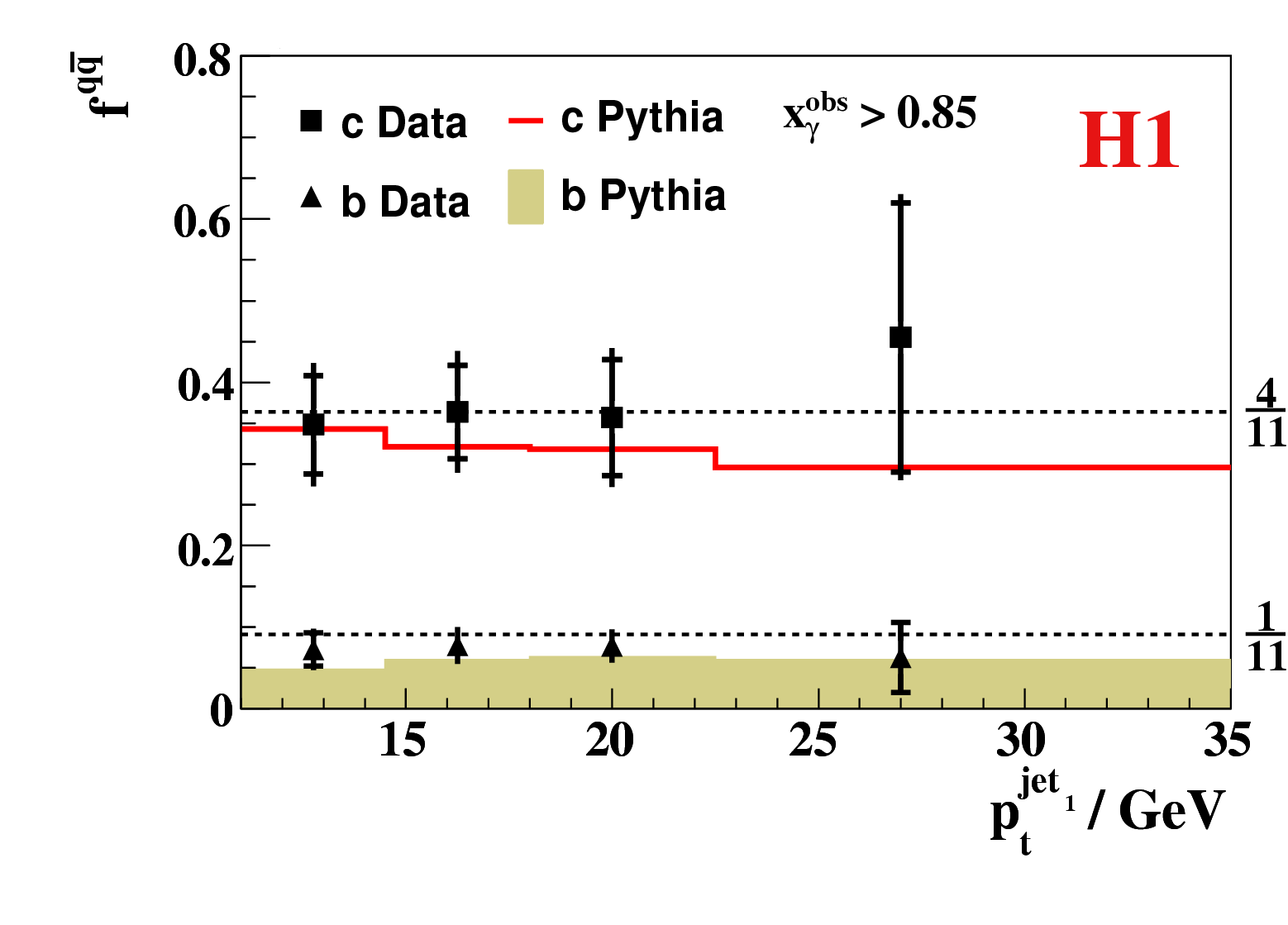

Measurement of Charm and Beauty Dijet Cross Sections in Photoproduction |
 Inclusive jet cross sections have been measured
in a wide kinematic range at HERA and good agreement has been found between
the measurements and theoretical calculations performed
in the framework of perturbative Quantum Chromodynamics (pQCD)
to next-to-leading order (see e.g.
here
).
These findings have provided increasing
confidence that the production mechanisms for dijet events are
well understood.
The study of heavy quark initiated jets provides a particularly interesting testing
ground of pQCD, since the large heavy quark masses already provide sufficiently hard
scales for the calculations.
However, there are
other hard scales relevant in heavy quark production processes, such as the virtuality, of
the exchanged photon and the transverse momentum of the outgoing quark.
The latter plays an important role for the theory calculations made in this measurement,
as the transverse
momentum of the quarks is required to exceed the beauty quark mass by a factor of
two through the event selection.
Inclusive jet cross sections have been measured
in a wide kinematic range at HERA and good agreement has been found between
the measurements and theoretical calculations performed
in the framework of perturbative Quantum Chromodynamics (pQCD)
to next-to-leading order (see e.g.
here
).
These findings have provided increasing
confidence that the production mechanisms for dijet events are
well understood.
The study of heavy quark initiated jets provides a particularly interesting testing
ground of pQCD, since the large heavy quark masses already provide sufficiently hard
scales for the calculations.
However, there are
other hard scales relevant in heavy quark production processes, such as the virtuality, of
the exchanged photon and the transverse momentum of the outgoing quark.
The latter plays an important role for the theory calculations made in this measurement,
as the transverse
momentum of the quarks is required to exceed the beauty quark mass by a factor of
two through the event selection.
The different quark flavours that contribute to the flavour inclusive cross section can
be distinguished on the basis of differences in the lifetime spectra of the produced hadrons.
In the figure on the right the impact parameter, i.e. the distance of charged tracks to
the primary vertex is shown.
Due to the long lifetimes of charm and beauty flavoured hadrons
the impact parameter distribution is asymmetric, the number of tracks with
positive values exceeding the number of tracks with negative values.
According to the on average longer lifetimes of beauty flavoured hadrons the asymmetry
is seen to be stronger for beauty (green area) than for charm (red curve).
In contrast, the component that arises from light quarks is almost symmetric, the width of
the distribution revealing the experimental resolution (blue curve).
The charm, beauty and light quark fractions in the data are extracted using
a fit to impact parameter significance distributions. Alternatively, an explicit
reconstruction of secondary vertices is performed for the quark flavour separation giving
consistent results.
Results
The figures below show exemplarily the results of the charm (left) and beauty (beauty) cross
section as a function of the transverse momentum of the leading jet which approximates the
quark momentum.
The data are compared to predictions from the massive NLO QCD calculation FMNR
as well as from the Monte Carlo programs PYTHIA and CASCADE.
The yellow bands estimate the uncertainties of the NLO prediction.
Whereas charm is in agreement with theories within the uncertainties, the measured beauty
cross section is seen to be somewhat larger than predicted.


Measuring the corresponding flavour inclusive dijet cross sections in the visible range gives access to the relative charm and beauty fractions. Some of the results are shown in the figures below. In the left figure the relative contributions are shown as a function of x_gamma which, in a leading order picture, corresponds to the fraction of the photon's energy in the proton rest frame that enters the hard interaction. The data are compared with the PYTHIA Monte Carlo simulation which predicts an increase of the relative charm and beauty contributions towards large values of x_gamma where direct photon-gluon fusion processes dominate. Neclecting the masses of the quarks, naive quark charge counting predicts fractions of 6/11, 4/11 and 1/11 for the production rates of light, charm and beauty dijets in direct photon-gluon fusion processes. The right figure shows that the data follows this simple picture in a region where the quark momentum is larger than two times the beauty quark mass.

